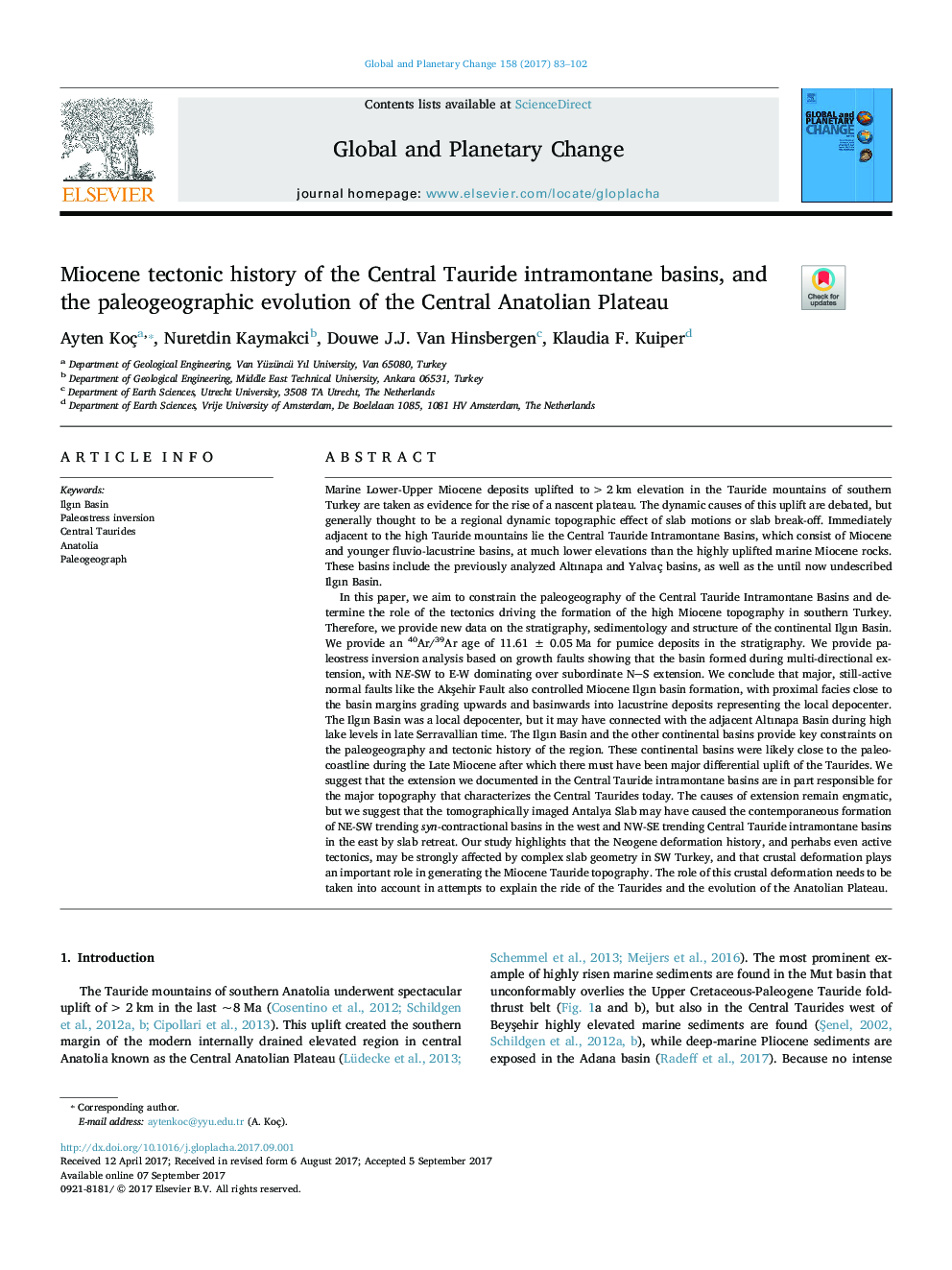| کد مقاله | کد نشریه | سال انتشار | مقاله انگلیسی | نسخه تمام متن |
|---|---|---|---|---|
| 5755210 | 1621624 | 2017 | 20 صفحه PDF | دانلود رایگان |
عنوان انگلیسی مقاله ISI
Miocene tectonic history of the Central Tauride intramontane basins, and the paleogeographic evolution of the Central Anatolian Plateau
دانلود مقاله + سفارش ترجمه
دانلود مقاله ISI انگلیسی
رایگان برای ایرانیان
کلمات کلیدی
موضوعات مرتبط
مهندسی و علوم پایه
علوم زمین و سیارات
فرآیندهای سطح زمین
پیش نمایش صفحه اول مقاله

چکیده انگلیسی
In this paper, we aim to constrain the paleogeography of the Central Tauride Intramontane Basins and determine the role of the tectonics driving the formation of the high Miocene topography in southern Turkey. Therefore, we provide new data on the stratigraphy, sedimentology and structure of the continental Ilgın Basin. We provide an 40Ar/39Ar age of 11.61 ± 0.05 Ma for pumice deposits in the stratigraphy. We provide paleostress inversion analysis based on growth faults showing that the basin formed during multi-directional extension, with NE-SW to E-W dominating over subordinate NS extension. We conclude that major, still-active normal faults like the AkÅehir Fault also controlled Miocene Ilgın basin formation, with proximal facies close to the basin margins grading upwards and basinwards into lacustrine deposits representing the local depocenter. The Ilgın Basin was a local depocenter, but it may have connected with the adjacent Altınapa Basin during high lake levels in late Serravallian time. The Ilgın Basin and the other continental basins provide key constraints on the paleogeography and tectonic history of the region. These continental basins were likely close to the paleo-coastline during the Late Miocene after which there must have been major differential uplift of the Taurides. We suggest that the extension we documented in the Central Tauride intramontane basins are in part responsible for the major topography that characterizes the Central Taurides today. The causes of extension remain engmatic, but we suggest that the tomographically imaged Antalya Slab may have caused the contemporaneous formation of NE-SW trending syn-contractional basins in the west and NW-SE trending Central Tauride intramontane basins in the east by slab retreat. Our study highlights that the Neogene deformation history, and perhabs even active tectonics, may be strongly affected by complex slab geometry in SW Turkey, and that crustal deformation plays an important role in generating the Miocene Tauride topography. The role of this crustal deformation needs to be taken into account in attempts to explain the ride of the Taurides and the evolution of the Anatolian Plateau.
ناشر
Database: Elsevier - ScienceDirect (ساینس دایرکت)
Journal: Global and Planetary Change - Volume 158, November 2017, Pages 83-102
Journal: Global and Planetary Change - Volume 158, November 2017, Pages 83-102
نویسندگان
Ayten Koç, Nuretdin Kaymakci, Douwe J.J. Van Hinsbergen, Klaudia F. Kuiper,